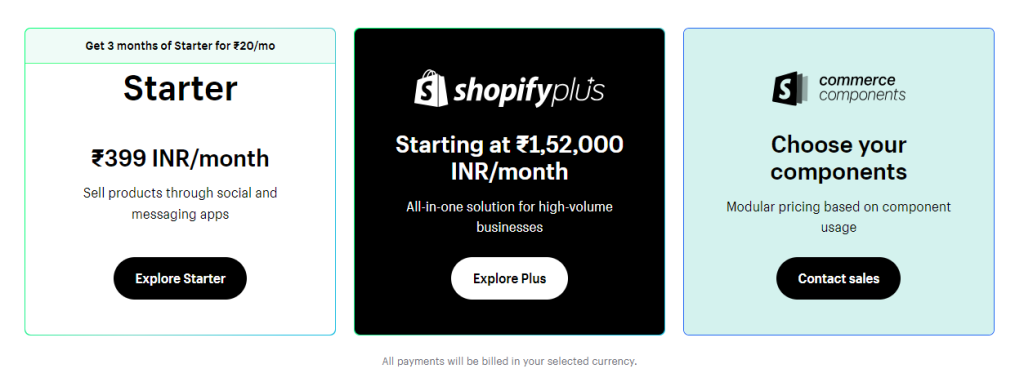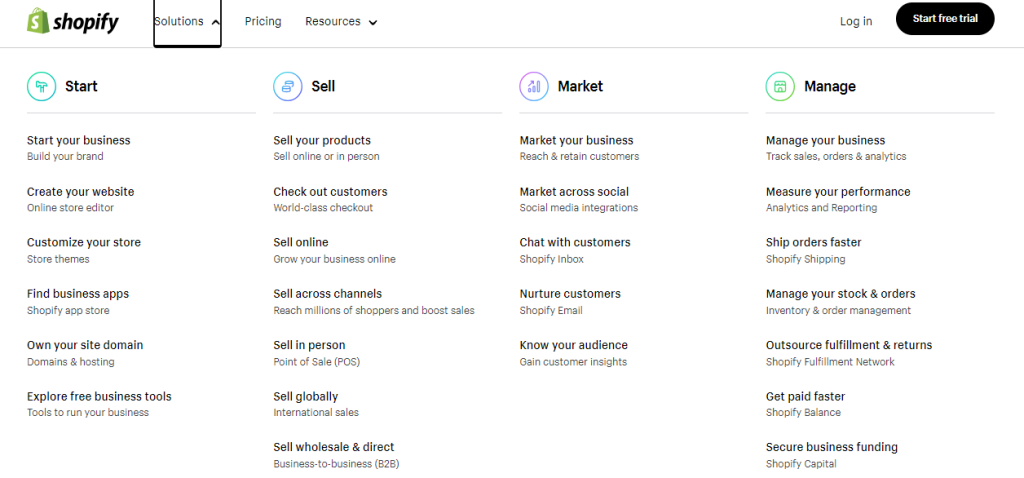Introduction

Welcome to the ultimate guide on how to set up your online store on Shopify! If you’re ready to dive into the world of e-commerce and unleash your entrepreneurial spirit, then you’ve come to the right place. With Shopify as your trusty companion, creating a stunning online store has never been easier or more exciting.
Whether you’re a seasoned business owner looking to expand your reach or an aspiring entrepreneur eager to make your mark in the digital landscape, Shopify offers all the tools and features you need to turn your dream into a thriving reality. From selecting beautiful themes that reflect your brand’s personality, to adding products with ease and setting up secure payment gateways – we’ll walk you through each step of this exhilarating journey.
So buckle up and get ready for an adventure where creativity meets commerce, as we unveil the secrets behind building a successful online store on Shopify. Let’s embark on this journey together and bring your vision to life in just a few clicks!
Shopify Plans and Pricing

When it comes to setting up your online store, one of the first things you need to consider is the pricing structure that Shopify offers. They have different plans available to cater to various business needs.
The Basic Shopify plan is perfect for small businesses starting out. It includes all the essential features like unlimited products, 24/7 customer support, and access to a range of payment gateways. This plan starts at $29 per month.
For growing businesses with more advanced requirements, there’s the Shopify plan. In addition to everything offered in the Basic plan, this option provides professional reports and abandoned cart recovery tools. The price for this plan is $79 per month.
If you’re running a large-scale operation or an enterprise-level business, then the Advanced Shopify plan might be right for you. Along with all previous features, this tier offers advanced report building capabilities and third-party calculated shipping rates. The cost for this top-tier option is $299 per month.
No matter which plan you choose, keep in mind that additional transaction fees may apply if you use external payment gateways instead of Shopify Payments.
With these flexible options available from Shopify, you can select a pricing plan that aligns with your budget and business goals. So go ahead and explore what works best for your online store!
Shopify Themes
Shopify Themes are essential for creating a visually appealing and professional online store. With Shopify, you have access to a wide range of themes that can be customized to match your brand’s identity.
Choosing the right theme is crucial as it sets the tone for your entire store. Whether you’re selling clothing, electronics, or handmade crafts, there’s a theme designed specifically for your niche.
When selecting a theme, consider factors such as layout options, mobile responsiveness, and overall design aesthetic. You want to create an intuitive and seamless shopping experience for your customers.
Customizing your chosen theme is easy with Shopify’s drag-and-drop interface. You can easily add your logo, choose colors that align with your brand guidelines, and customize fonts to enhance the visual appeal of your store.
Additionally, many Shopify themes come with built-in features like product filtering options or integrated social media buttons. These features can help improve user experience and increase customer engagement on your site.
Remember that while aesthetics are important when choosing a theme, functionality should not be overlooked. Make sure that the selected theme offers all the necessary features for running an efficient online store such as product galleries or quick view options.
Shopify provides an extensive collection of themes suitable for any type of business. Take the time to explore different options and find one that not only looks great but also meets all of your business needs.
Adding Products to Your Shopify Store

Once you have set up your online store on Shopify, the next step is to start adding products. This is where you can showcase your inventory and entice customers with what you have to offer. The process of adding products on Shopify is simple and straightforward.
To get started, navigate to the Products section in your Shopify dashboard. From here, click on the “Add product” button. You will be prompted to enter details such as the product title, description, price, and images.
Make sure to write compelling and informative product descriptions that highlight the features and benefits of each item. Use high-quality images that accurately represent your products. Remember, visuals play a crucial role in attracting potential buyers.
Additionally, you can organize your products into categories or collections for easier navigation for customers. This helps create a seamless shopping experience on your store.
Don’t forget about SEO when adding products! Optimize each product page by including relevant keywords in titles, descriptions, and alt tags for images. This will improve visibility in search engine results pages (SERPs) and drive organic traffic to your site.
Make use of Shopify’s built-in inventory management system to keep track of stock levels and avoid overselling items.
By following these steps consistently when adding products to your Shopify store, you’ll ensure an enticing shopping experience for visitors while maximizing sales potential.
Payment Gateway Setup
Setting up a payment gateway is a crucial step in establishing your online store on Shopify. This will enable you to securely accept payments from your customers and facilitate smooth transactions. Thankfully, Shopify offers seamless integration with various payment gateways, making the setup process hassle-free.
To begin, log in to your Shopify admin dashboard and navigate to the “Settings” tab. From there, select “Payments” and choose the payment gateway that suits your business needs. Whether you prefer popular options like PayPal or Stripe, or want to explore alternative providers like Authorize.net or Klarna – Shopify has got you covered.
Once you’ve chosen your desired payment gateway, simply follow the prompts to connect it with your Shopify store. You may need to set up an account with the respective provider if you haven’t already done so.
After connecting your payment gateway, be sure to test it thoroughly before launching your store. Place a few test orders using different transaction scenarios (e.g., credit card payments, digital wallets) to ensure everything functions smoothly.
Remember that offering multiple payment options can enhance customer convenience and improve conversion rates. By providing choices such as credit cards, Apple Pay, Google Pay, and even cryptocurrency acceptance through BitPay or Coinbase Commerce – you can cater to a wider range of customers’ preferences.
By setting up a reliable and secure payment gateway for your Shopify store early on, you’ll establish trust with potential buyers and create an effortless shopping experience for them. So take some time today to configure this essential aspect of running an online business!
Shipping Rates and Methods
When it comes to setting up your online store on Shopify, one crucial aspect you need to consider is shipping rates and methods. After all, you want your customers to receive their orders in a timely manner and at a reasonable cost.
It’s essential to determine the shipping rates that are best suited for your business. You can choose from various options such as flat-rate shipping or calculated rates based on weight or destination. Take into account factors like product size, weight, and distance when deciding on the most appropriate method.
Next, explore different shipping carriers that integrate with Shopify to find the one that meets your requirements in terms of price and service quality. Popular choices include USPS, UPS, FedEx, DHL, and Canada Post.
To streamline the process further, take advantage of Shopify’s built-in tools like label printing and order tracking. These features not only save time but also provide transparency for both you and your customers throughout the entire shipping journey.
Remember that communication is key when it comes to managing customer expectations regarding shipping timescales. Clearly state estimated delivery times on product pages or during checkout so customers know what to expect before placing an order.
By carefully considering these aspects of setting up shipping rates and methods in your Shopify store, you’ll be able to provide a seamless experience for your customers while ensuring efficient management of logistics behind-the-scenes.
Search Engine Optimization
Search Engine Optimization (SEO) plays a crucial role in driving organic traffic to your Shopify store. By optimizing your website for search engines, you can increase your visibility and improve your chances of attracting potential customers.
One important aspect of SEO is keyword research. Identify relevant keywords that are commonly used by people searching for products or services similar to yours. Use these keywords strategically throughout your website, including in page titles, meta descriptions, headings, and content.
Another key factor in SEO is the quality and relevance of your content. Create high-quality product descriptions and blog posts that provide valuable information to users. Include images with alt tags that contain relevant keywords.
Optimizing the loading speed of your Shopify store is also crucial for SEO success. Make sure to compress images, minify CSS and JavaScript files, enable browser caching, and use a responsive design for mobile devices.
Additionally, consider building backlinks from reputable websites within your niche. Guest posting on industry-related blogs or reaching out to influencers can help generate valuable backlinks that signal credibility to search engines.
Regularly monitoring and analyzing data through tools like Google Analytics will help you understand how users engage with your site. This insight allows you to make necessary adjustments and improvements based on user behavior.
Remember that SEO takes time before you see significant results. Be patient but consistent in implementing best practices across all aspects of optimization – from keyword research to technical improvements – so that search engines can better understand what your online store offers.
Promoting Your Shopify Store

Once you’ve set up your online store on Shopify, the next step is to start promoting it. After all, what good is a beautiful and functional website if no one knows about it? Here are some effective strategies for promoting your Shopify store and driving traffic to your site.
1. Social Media Marketing: Leverage the power of social media platforms like Facebook, Instagram, Twitter, and Pinterest to reach a wider audience. Create engaging content, share product updates, run contests or giveaways, and interact with customers to build brand awareness.
2. Influencer Marketing: Collaborate with influencers in your niche who have a strong following. They can help promote your products to their audience through sponsored posts or product reviews.
3. Email Marketing: Build an email list of interested customers and send them regular newsletters or promotional offers. Personalize your emails based on customer preferences to increase engagement.
4. Content Marketing: Create valuable content such as blog posts, videos, tutorials, or guides related to your products or industry. This helps establish you as an expert in your field while also attracting organic traffic from search engines.
5. Paid Advertising: Consider running paid ads on platforms like Google Ads or Facebook Ads to target specific audiences who are more likely to be interested in purchasing from you.
6. SEO Optimization: Optimize your website’s content with relevant keywords so that search engines can easily find and rank your site higher in search results pages.
Remember that promoting a Shopify store requires consistent effort and experimentation with different marketing strategies until you find what works best for you.
Conclusion
Setting up your online store on Shopify is a seamless and user-friendly experience. With its range of plans and pricing options, you can find the perfect fit for your business needs. The variety of themes available allows you to customize the look and feel of your store, creating a unique brand identity.
Adding products to your Shopify store is a breeze, with intuitive tools that make organizing and managing inventory a simple task. Setting up payment gateways ensures smooth transactions for your customers, while shipping rates and methods are easily configured to meet their delivery preferences.
But don’t stop there! To maximize the success of your Shopify store, it’s crucial to focus on search engine optimization (SEO). By optimizing product descriptions, titles, URLs, and meta tags with relevant keywords related to your niche or industry, you’ll enhance visibility in search engine results pages (SERPs).
Promoting your Shopify store through various channels such as social media marketing campaigns or influencer collaborations can help drive traffic and increase sales. Utilize email marketing strategies like sending newsletters or offering exclusive discounts to engage with potential customers.
Remember that building an online presence takes time and effort. Consistency in providing high-quality products or services combined with exceptional customer service will build trust among shoppers and encourage repeat purchases.
So what are you waiting for? Take advantage of all the features offered by Shopify – from easy setup processes to powerful marketing tools – and start growing your online business today!
Whether you’re just starting out or looking to expand an existing brick-and-mortar shop into the digital realm, setting up an online store on Shopify is undoubtedly one of the best decisions you can make for your business. So dive in headfirst; success awaits!



